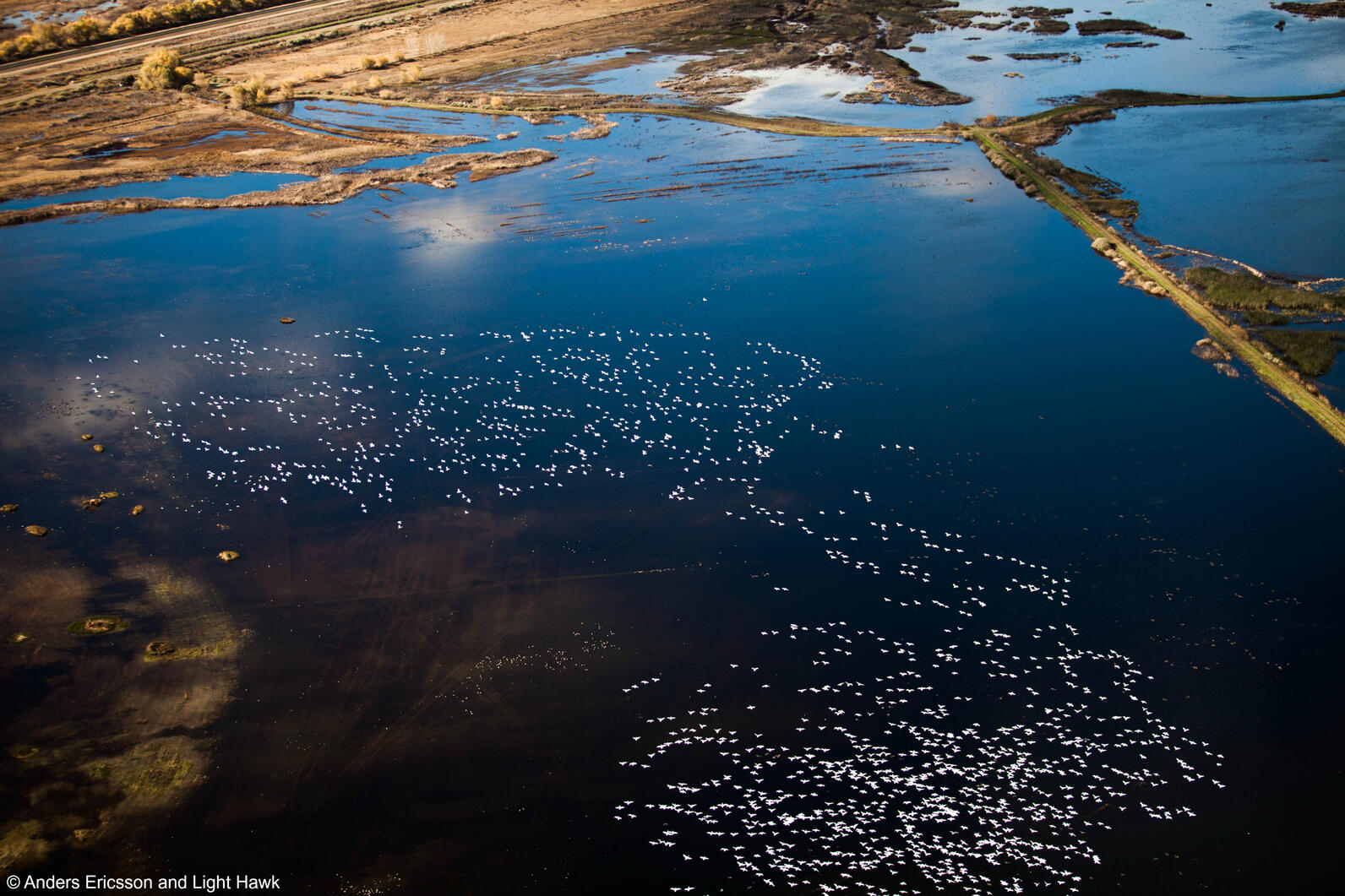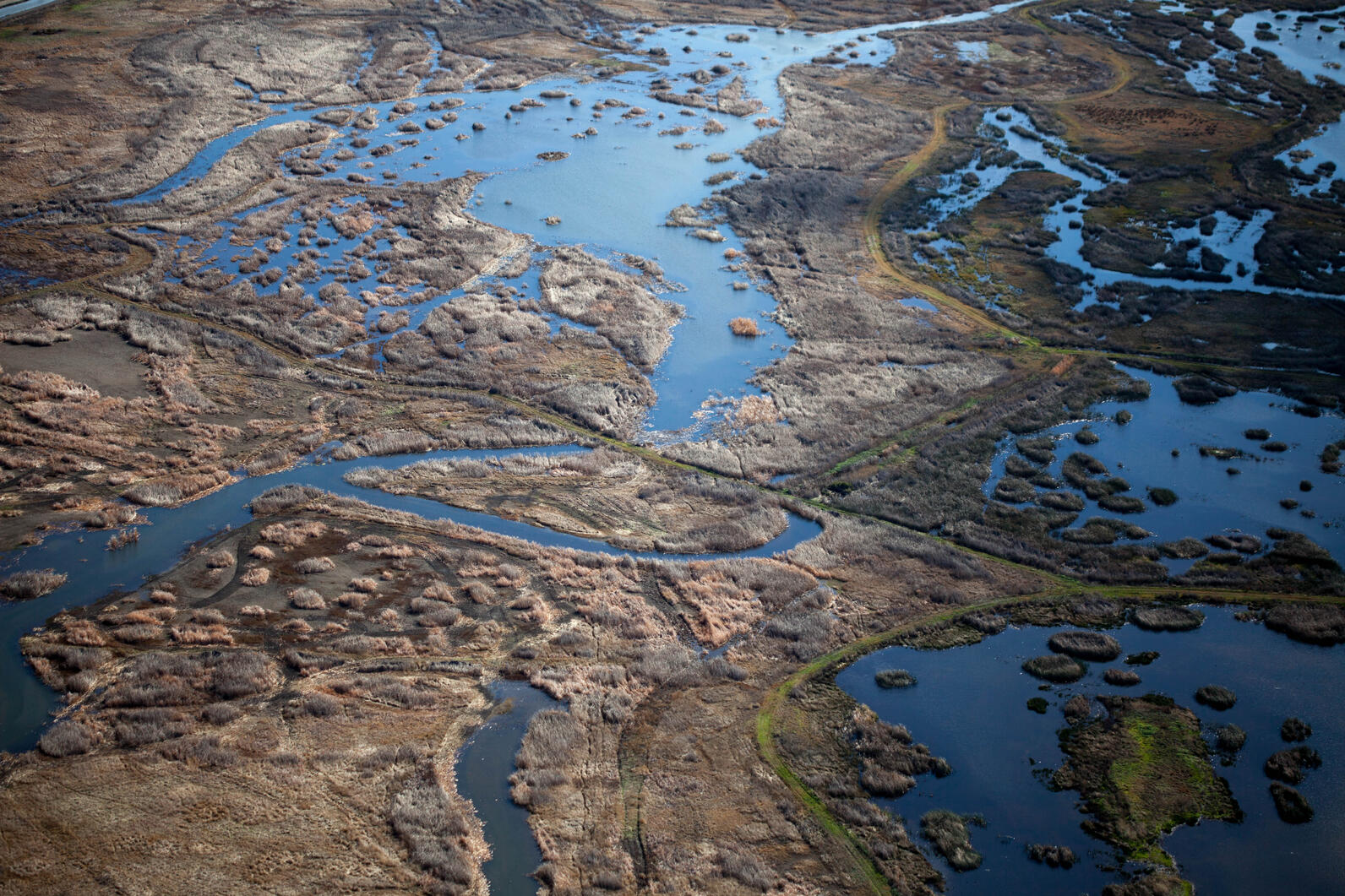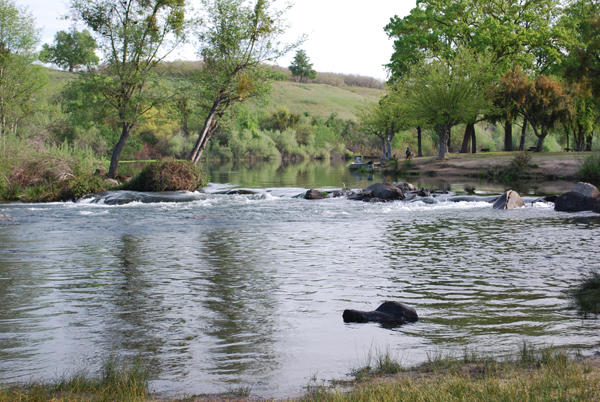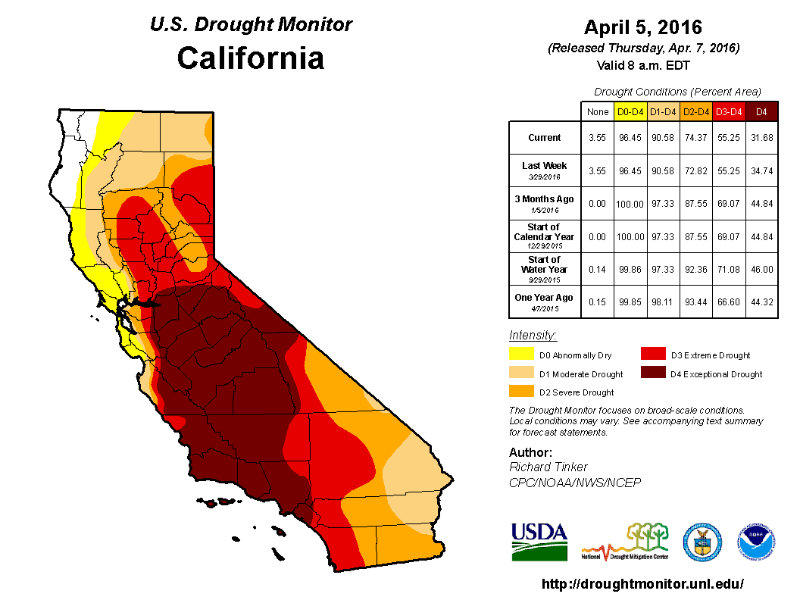Northern Pintail
Latin: Anas acuta
Water and wetlands are vital for the survival of California’s birds.
Wood Duck Photo: Harry Collins
Water is fundamental to our lives, our communities, and our economy. Water is also of vital importance to the survival of California’s birds and the habitats that support them. From our coastal estuaries to inland wetlands and waterbodies, water is the foundation of life.

That’s why Audubon California has been leading efforts to secure water when and where birds and people need it. This includes working on the policies and in the places where water matters most. We advocate for birds and drinking water for communities in five key ways:
Read more about the important work that Audubon California is doing to secure water for birds and for communities below.

Vital protections are needed for wetlands that depend on groundwater under the Sustainable Groundwater Management Act
Audubon California continues to advocate for adequate water supplies for Central Valley refuges.
Vibrant ecosystems can absorb carbon dioxide helping mitigate climate change and nitrogen cleaning the run-off from human use of the land for agriculture or development.
First-of-its-kind project restores 400 acres of tidal marsh habitat along Sonoma Creek in northern San Francisco Bay, helping withstand sea level rise and storm surges from climate change.
Audubon California is nearing the end of a massive restoration of wetland habitat in San Francisco Bay.
California is first in nation to commit to protecting 30% of our lands and waters by 2030.
Audubon California is helping secure the future of one of the state's key bird habitats.
Coalition of conservation and community groups says groundbreaking is positive step towards ending years of inaction at California’s largest lake.
One of the first ten sites in the U.S. to receive "Globally Important Bird Area" recognition.
The Pacific Institute's Peter Gleick pens a harsh opinion in the Los Angeles Times today about Congressional efforts to address California's drought:
"The federal government has a vital role to play in helping states address water problems: improving management of federal infrastructure, funding research of new technologies, setting standards for water-quality and appliance efficiency, as well as protecting the environment and marginalized communities. And yet none of those issues is the thrust of the two water bills now moving through the House and Senate. Instead, a California-centric bill sponsored by Sen. Dianne Feinstein anda Western water bill sponsored by Rep. David Valadao both contain egregious, anti-environmental giveaways hidden behind modest provisions for modernizing California's water system."
It's worth a read.

American Rivers this week declared California's San Joaquin River the second most endangered river in the United States. “Dams, levees and excessive water diversions have hurt river habitat and opportunities for recreation and community access,” the report says. “The river’s salmon and steelhead populations are on the brink of extinction.” Audubon California has advocated for the restoration of the San Joaquin River for some time -- more about that on our website.

According to the U.S. Drought Monitor, California continues to experience drought. The consorsium of government agencies says that only a small part of the state -- 3.55 percent in the far northwest -- is not in drought. But 96 percent remains abnormally dry, with 90 percent in moderate, 74 percent in severe, 55 percent in extreme and 31 percent in exceptional drought.
Audubon California Newsletter comes to your inbox monthly with breaking news and important conservation updates from our state.
Help secure the future for birds at risk from climate change, habitat loss and other threats. Your support will power our science, education, advocacy and on-the-ground conservation efforts.
Your advocacy helped save the California Condor. Tell your reps you want a climate bond to ensure the future of critical conservation efforts.